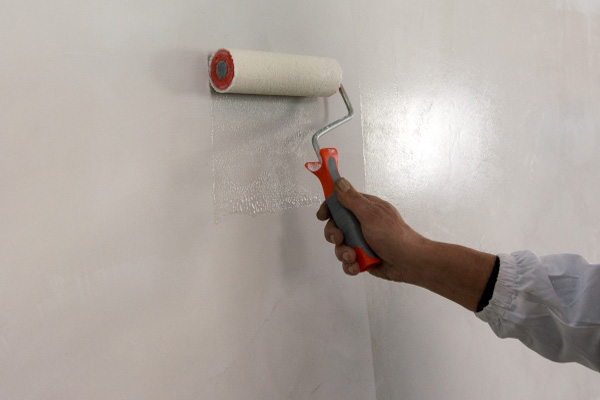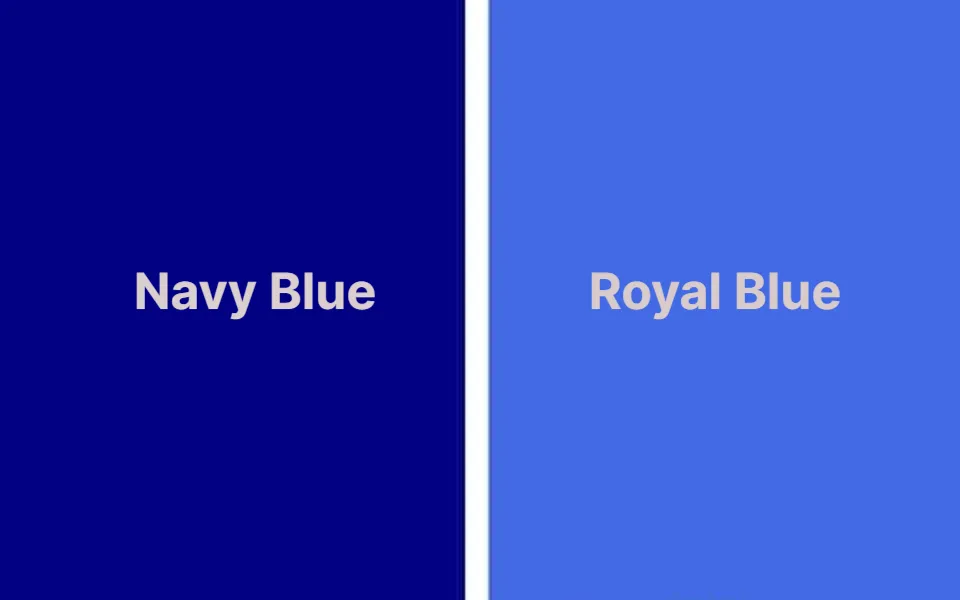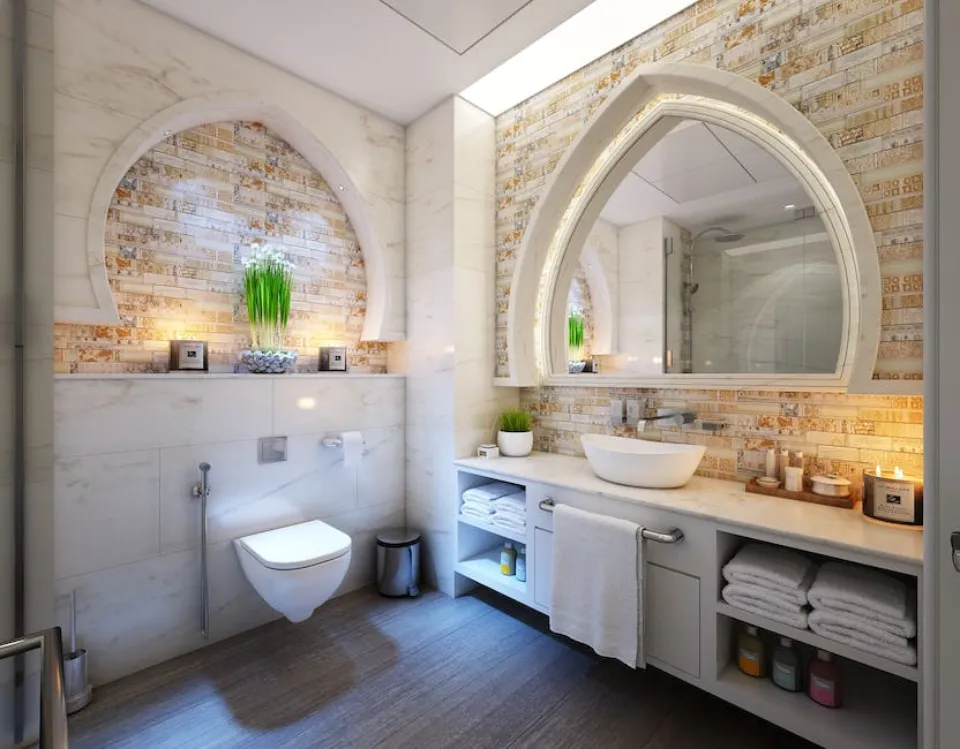To begin with, can you paint concrete? YES!
Almost any concrete surface that’s in sound condition can be painted. That covers both interior surfaces like floors and walls as well as exterior ones like patios, sidewalks, and pool decks. Make sure the surface is clean and free of any sealants or coatings that might hinder the paint’s adhesion.
Concrete paint is not the best option for high-traffic areas like concrete driveways because it is a surface coating and susceptible to abrasion. An acid-based stain or dry-shake color hardener will provide better wear resistance for these applications.
In the paragraphs that follow, I’ll give you more information on whether can you paint over smooth concrete.
Why Concrete Is Tricky To Paint?
Concrete is porous, so the first coat of paint will likely absorb into the surface and result in a possibly patchy finish. On concrete floors, a machine that produces a power floated floor is used by many contractors. Concrete is porous, so the majority of paint systems call for thinning the first coat. This enables the paint to adhere to the substrate properly.
A Power Floated Floor: What Is It?
When a machine is used to seal the concrete floor’s surface, the flooring is said to be power floated. It then becomes non-porous by sealing the surface. The advantages of power floating a floor are that it will become much more durable and dust-free. The floor as a result is much smoother and simpler to clean.
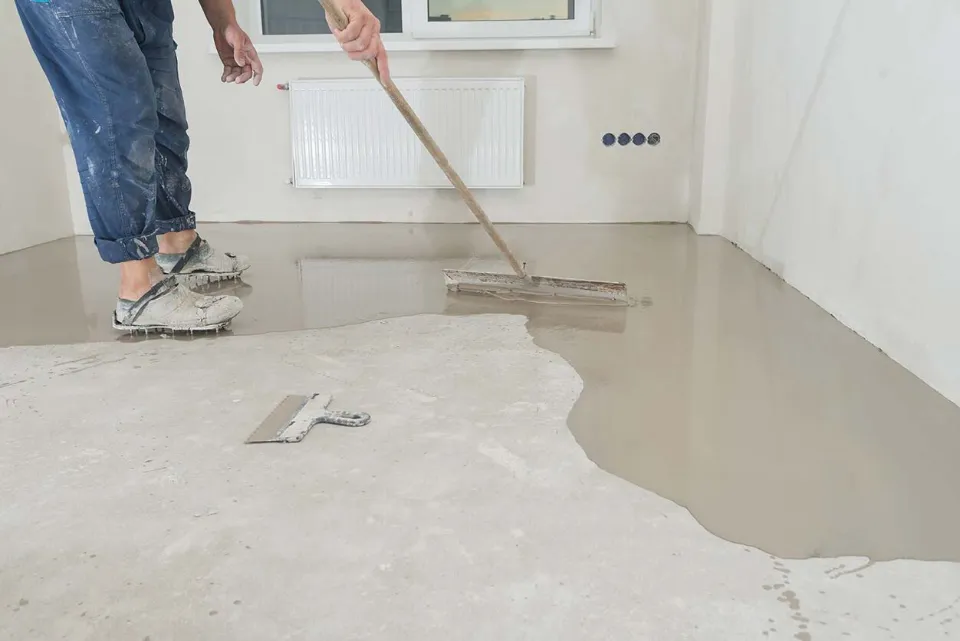
When Is Concrete Safe To Paint?
Painting freshly laid concrete is not advised right away. Concrete typically dries at a 25mm per month rate of thickness. Green concrete is a term that is frequently used to describe new concrete. It might be okay for you to walk on, but not for painting. Prior to painting, laitance would need to be removed after the concrete has sufficiently cured.
If you need to pay for your concrete floor before it is thoroughly dry, there are a number of
Nevertheless, we do offer a number of items that can be used to coat green concrete. If you want to seal new concrete have a look at Sika’s Sikafloor Proseal W. If you would like to paint your new concrete with a color before it has properly cured, take a look at Remmers Epoxy Bs2000 and Epoxy Remmers BS 3000 SG. An alternative single pack product would be Bedec or Coo-Var Floor Acrylic Paint. Due to their microporous nature, these products enable concrete to dry.
Please get in touch with our technical team to discuss your specific project if you have any questions about timelines or methodology.
How To Paint Concrete?
Here is an easy step-by-step guide on how to paint concrete:
Clean The Concrete
Concrete has a porous surface that tends to trap dirt, grease, and oil, so cleaning it is an essential first step.
- Trisodium phosphate ($6.30 per quart concentrate) can be used to remove dirt and grease, or you can opt for a more environmentally friendly cleaner like Krud Kutter’s pre-paint cleaner ($10 for 32 ounces).
- Cut back moss and vines that are encroaching on the foundation. To remove any last bits of dirt and roots, use a pressure washer.
- Eliminate efflorescence, a white powder that develops on wet concrete. Try Krud Kutter Concrete Clean & Etch ($8.50 for 32 ounces), or phosphoric acid masonry cleaner ($27 per gallon) if you need more cleaning power.
Strip Old Paint
Use a wire brush ($3–$5), a paint scraper ($10–$20), and a lot of elbow grease to remove peeling or blistering paint indoors.
Use a power washer to remove old paint outside (rentals range from $40 to $75 per day).
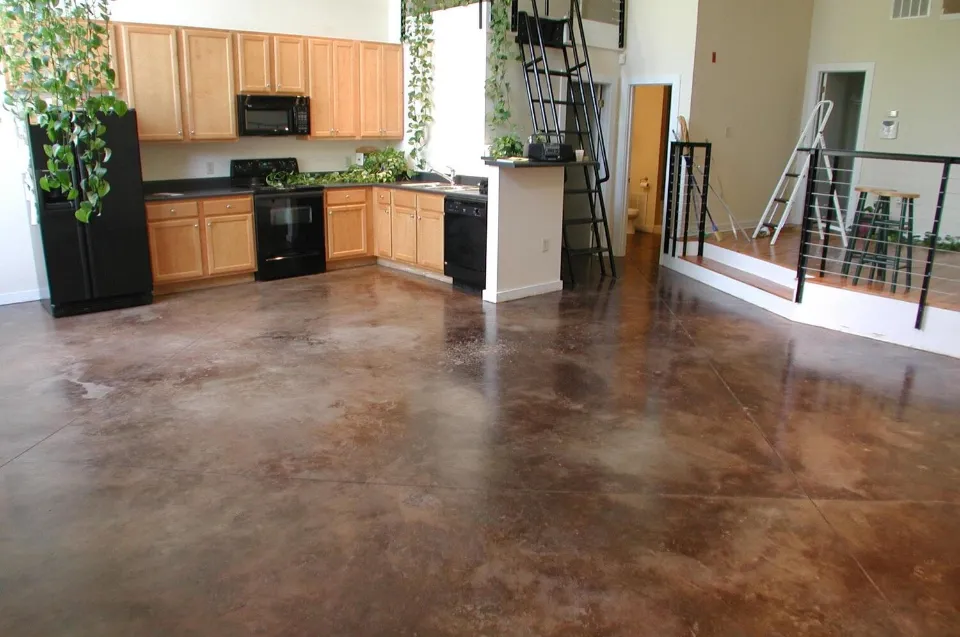
Seal Interior Concrete
Concrete interior walls must be sealed in order to stop moisture from seeping in, encouraging the growth of mold, and giving the impression that the basement is cold and damp because water permeates porous concrete easily. Use a masonry sealer like ThoroSeal ($35 for a 50-pound bag), which also repairs cracks.
Pay close attention to the instructions for mixing, applying, and curing the sealer. For instance, ThoroSeal needs two coats; the producer advises waiting five to seven days before applying the second coat.
Prime The Concrete
Block primer, also known as concrete primer, evens out the surface and fills in pore spaces. Use exterior-grade block filler for exterior foundations and walls, such as Behr’s Concrete and Masonry Bonding Primer ($17.98 per gallon), which is also suitable for interior concrete. Wait no longer than 30 days before painting after the primer has dried for at least eight hours.
Paint The Concrete
For painting concrete, masonry paint, also known as elastomeric paint or elastomeric wall coating, is a good option because it contains binders that expand and contract with the concrete. Concrete can become damaged by exterior house paint and peel.
Exterior paint is much thinner, while masonry paint ($20 per gallon) can be tinted. Use a high-capacity (3/4-inch or higher) roller, a texture roller, or a masonry brush to apply it ($5 to $8), respectively.
Some masonry paint has fine particles that can clog air sprayers and is thicker than exterior paint. Ask your neighborhood paint store for a $300 product that will work well in a sprayer if you want to spray paint cement.
Allow a day to pass between coats of paint no matter how you apply it. Check the extended weather forecast before you start because you’ll likely need two to three coats.
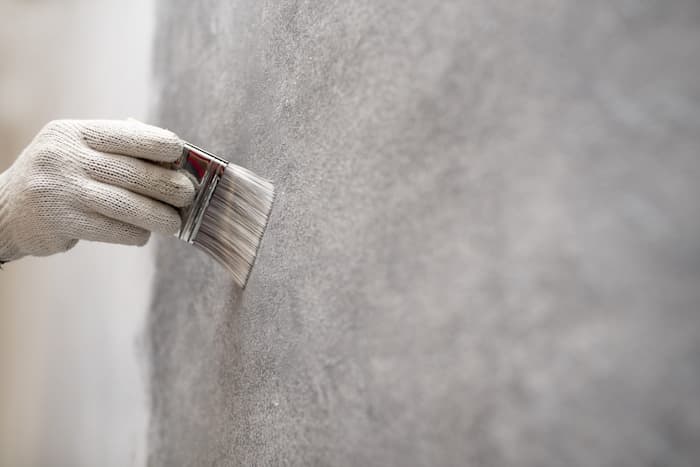
Where Does Concrete Paint Differ From Concrete Stain?
The way an acid-based concrete stain and paint interact with the concrete is the main distinction between them. Acid-based stains actually penetrate the salts and minerals in concrete and interact with them to produce rich, deep, translucent tones. Despite the color’s durability and indestructibility, it can be unpredictable and will change depending on the characteristics of the concrete.
In order to achieve an opaque, even, consistent color, concrete paint fills the surface pores of the concrete and is non-reactive (much like a water-based concrete stain). However, paint can crack and peel over time, particularly if the surface isn’t properly prepared. See more about What Color Grout To Use With Gray Tile?
What Set Separates Concrete Stain From Concrete Paint?
The reaction they have with the concrete is the main distinction between acid-based concrete stains and paint. Acid-based stains actually penetrate the salts and minerals in concrete and interact with them to produce rich, deep, translucent tones. Although the color is durable and won’t chip or peel off, it can be erratic and will change depending on the characteristics of the concrete.
Concrete paint fills the surface pores of the concrete to produce an opaque, uniform, and consistent color. Concrete paint is non-reactive (similar to a water-based concrete stain). However, paint can eventually peel and chip, especially if the surface isn’t properly prepared.
Suggested reading: One of the best ways to quickly improve the appearance and ambiance of a space where you probably spend a lot of time is by updating your kitchen cabinets. So, how much does it cost to paint kitchen cabinets?
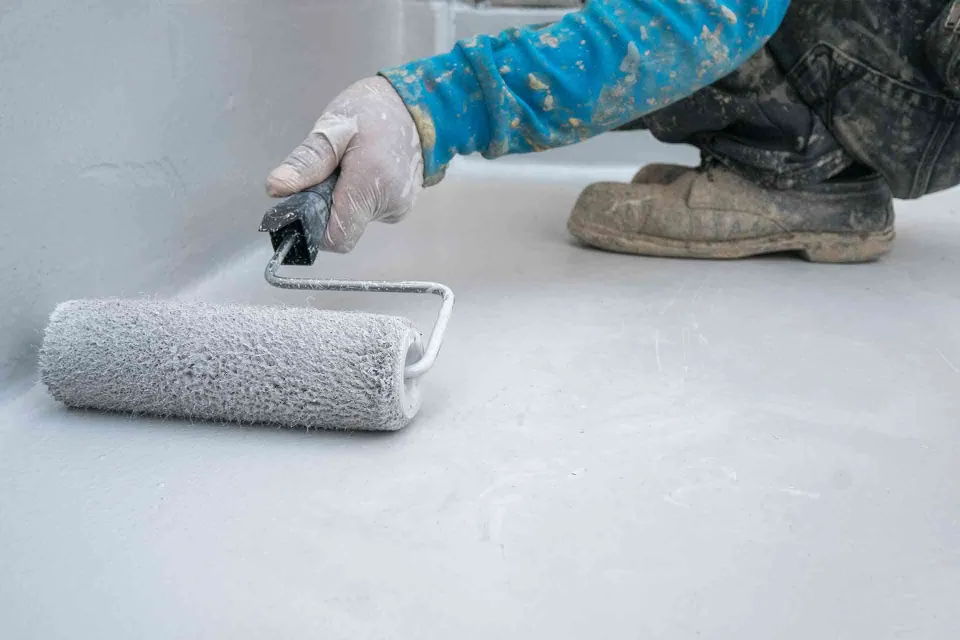
What Benefits Are There To Coloring Concrete With Paint?
Concrete paint is unbeatable if you’re looking for a product that is:
- Easy to apply
- Economical
- Offers a broad selection of colors
- Provides good coverage
Contrary to acid stains, which need to be applied with a sprayer, most concrete paints can be applied with a straightforward paintbrush or roller. Since the majority of concrete paints are water-based acrylic latex formulations, cleanup is also straightforward. Additionally, applying concrete paints is safer, particularly indoors. Because they frequently contain corrosive elements that can irritate the skin and eyes and emit strong odors, it’s crucial to exercise caution when working with acid-based stains.
Most concrete paints can be tinted, giving you a limitless selection of color options, similar to latex-based house paint. Additionally, concrete paints are excellent at hiding hairline cracks and other minor flaws in existing concrete because they are opaque and can be applied in multiple coats, as opposed to a translucent stain that would allow those flaws to show through.
What Is The Best Concrete Paint To Use?
Make sure to select a paint designed specifically for use on concrete or masonry when looking around for concrete paint. These paints contain binders that enable them to expand and contract with the concrete and are thicker and more resilient than conventional exterior or interior wall paints.
Concrete paints are usually labeled to specify the kind of surface they are best suited for:
- Concrete porch and patio paints are acrylic latex paints designed to resist fading, scuffing, peeling, and They are available in low-luster and gloss finishes, and they can be used on interior concrete floors as well.
- Waterproofing masonry paints are designed for brick and other masonry applications, but can also be used to paint concrete basement and foundation walls. Due to their resistance to mildew, dirt, and moisture penetration, they are excellent for exterior use.
- Concrete garage and floor paints are designed for applications such as garages, car ports, basement floors, and walkways. In addition to resisting peeling brought on by hot tires, they are specially formulated to withstand stains from motor oil, grease, and gasoline.
Epoxy coatings, which are frequently two-component resin-based systems that chemically bond with the concrete, should not be confused with concrete paint. Epoxy coatings are more expensive per square foot than paint and are more difficult to apply, but they are frequently more durable and wear-resistant, making them a good option for garage floors and other high-traffic areas.
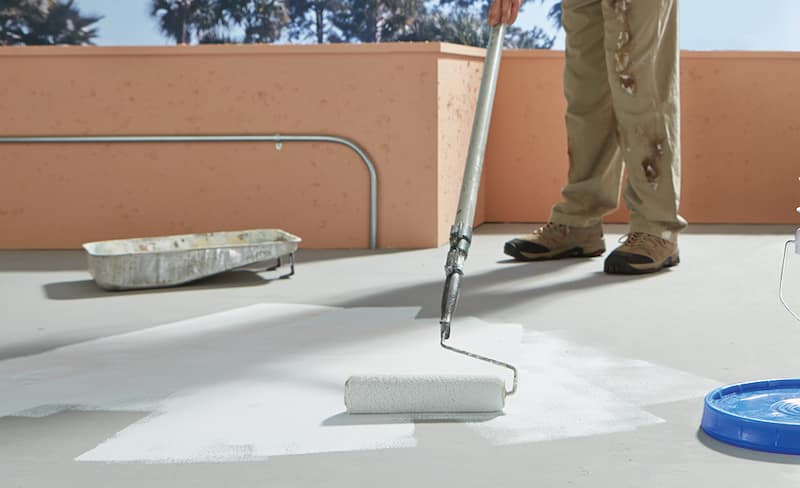
While Paint Concrete, How Do I Get Good Results?
Any concrete surface that you plan to paint must be free of contaminants and any applied coatings, sealants, or curing agents. If not, the paint won’t be able to fully adhere to the concrete. For proper paint adhesion, the concrete that will be painted should also have a light texture. Depending on how smooth or hard-troweled the surface is, it might need to be mechanically or acid-etched beforehand. Much of the information provided here regarding floor preparation prior to staining also applies to concrete paints.
Many products are self-priming and can be applied directly to bare concrete, even though some concrete paints recommend priming. Make sure to abide by the instructions provided by the paint manufacturer. When painting concrete surfaces outside, especially, follow the manufacturer’s recommendations for minimum air and surface temperatures during application. Most of the time, temperatures should be higher than 50 degrees Fahrenheit.
Concrete must be dry and free of moisture-trapped particles in order for paint to adhere properly. Duct tape an 18-inch square of clear plastic to the concrete and leave it in place for 24 hours to test the concrete’s moisture content before painting. After that point, condensation will start to build up underneath the plastic, indicating that the concrete needs more time to dry before painting because it is still too wet.
Why Don’t More Homeowners Pick To Paint Concrete?
Painting or staining a concrete surface is typically more difficult than simply painting drywall with a new color. The process requires some additional prep work because porous concrete tends to absorb paint and moisture (which can prevent paint from adhering). Painting concrete isn’t a difficult project despite the additional steps, and the result may be well worth the work.
How To Color Concrete With Acid Stain?
The procedure begins similarly to painting if you decide to use an acid stain to color your concrete. Correct stain coloring depends on thorough cleaning and any required repairs. After preparing the concrete, use a brush or roller to evenly coat the stain. (Since concrete stains are translucent, you might not be able to get the same uniform appearance that paint does.) Finish the project with a protective sealant layer after the stain has dried.
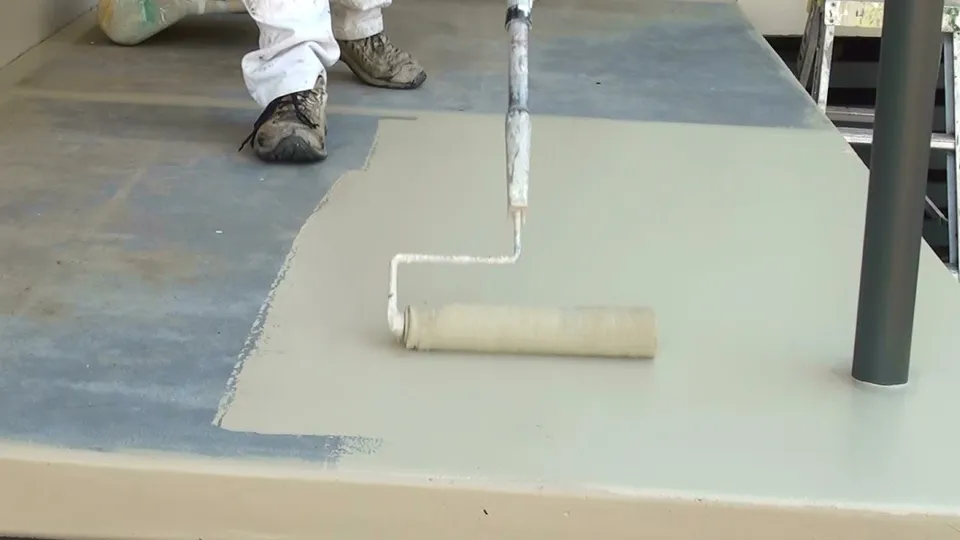
How To Paint Concrete Floors?
Here is an easy step-by-step guide on how to paint concrete floors:
Choose A Paint
Today’s market offers a wide variety of options for concrete floor paint. Knowing what paint to buy is important whether you’re painting your garage floor, basement floor, or even your front stoop.
Prep Painting Area
- Remove all obstructions from the painting area and completely clear it.
- Examine the concrete for stains, water, grease, and loose chipped paint as well as for cracks, structural damage, and loose paint.
- A wire brush or a side grinder with a wire wheel attachment can be used to scrape off old paint from a floor that has been painted multiple times.
- Vacuum and sweep the painting area completely.
Tape Off
Mask off the room’s baseboard and walls with painter’s tape. If you want to avoid painting any baseboard heaters, banisters, or moldings, you should mask them off.
Primer Coat
At this point, a coat of primer might need to be applied. Some floor paints don’t need a primer. Check the paint can’s application guidelines and follow the manufacturer’s advice.
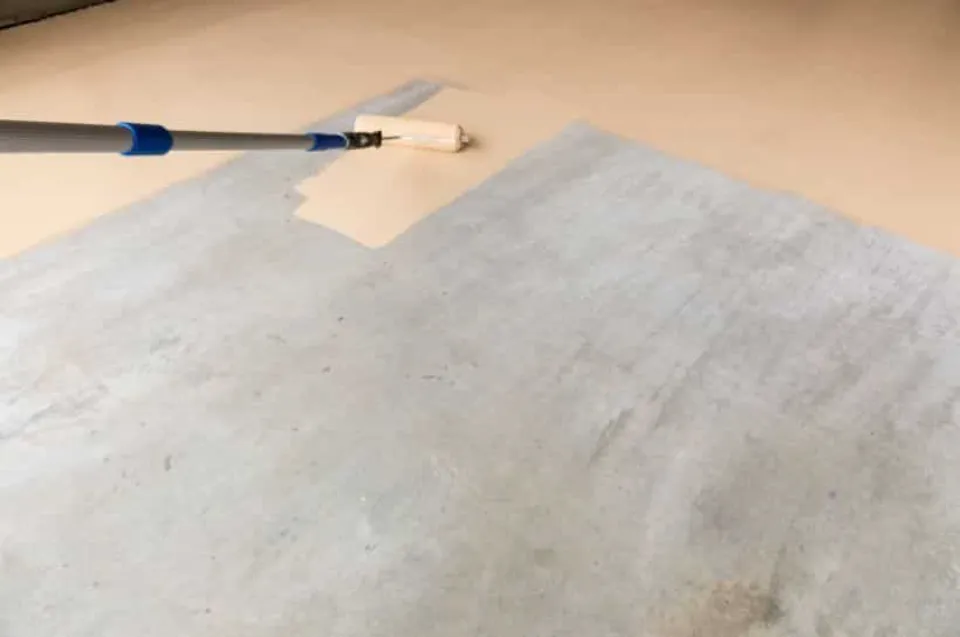
Cutting In
Open a few windows for ventilation before you begin.
Put just enough paint in a little container that you can hold in one hand. A 2-1/2-in. paintbrush should be used to paint the floor’s edge around the entire room’s perimeter. angled paintbrush. (This is called “cutting in.”)
Roller Painting
Before you start, make sure to stir the paint with a paint stick.
The room’s corner furthest from the door should be your starting point. Paint in three- to four-foot segments and work your way outside. Don’t put yourself in a tight spot.
Just over half of the paint should be in the roller tray. If there is too much paint in the tray, it might spill.
From the paint tray, fill the roller with paint, then roll it across the floor. To make sure the floor is evenly covered, roll the roller straight back over the paint without reloading it.
Refill the roller with paint once more, then begin a new row by overlapping the one that was previously painted. Paint buildup lines frequently appear along the roller’s edges. The lines should be rolled over once more to make them disappear into the surrounding paint.
Clean Up
After finishing, immediately wash your paintbrush in hot water with dish soap.
As soon as you’re done, wash your roller in hot water with dish soap (or discard it).
Give the paint at least four hours to completely dry.
Use a putty knife to score the edge where the tape meets the floor as you gradually remove the tape to stop the new paint from flaking.
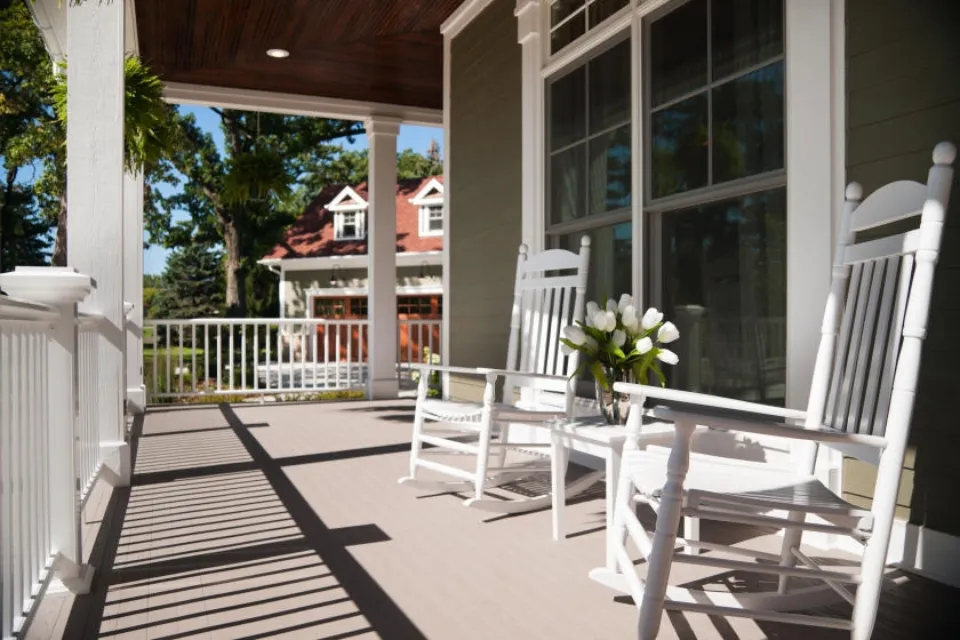
FAQs
Is Painting Concrete a Good Idea?
A coat of paint will help disguise repairs on concrete steps and walkways. As a result, a home’s entrance will have a polished and finished appearance with excellent curb appeal. Prior to painting concrete, take your time with the preparation. You’ll get the best results if you make the surface as smooth and clean as you can.
What Kind of Paint Can Be Used on Concrete?
Masonry paint (also called elastomeric paint or elastomeric wall coating) is a good choice for concrete painting because it contains binders that contract and expand with the concrete. On concrete, exterior house paint may peel and crack.
Do I Need to Prime Concrete before Painting?
Priming concrete is the all-important third step when painting concrete – right behind cleaning thoroughly to remove dirt and efflorescence (the white powder often found on damp concrete) and applying a sealer to inhibit moisture damage.
How Long Will Paint Last on Concrete?
To help the product adhere to porous concrete surfaces, some brands also advise using an etching primer, which creates very minute scratches in the concrete. How long is concrete paint good for? Most brands suggest that you apply a new coat every 3–5 years, depending on use.
Why Not to Paint Concrete?
Because concrete paint is a surface coating and vulnerable to abrasion, it’s not the best choice for high-traffic areas such as concrete driveways. For these uses, a dry-shake color hardener or acid-based stain will offer better wear resistance.
The Bottom Line: Can You Paint Concrete?
Your concrete surface can most definitely be painted. You must adhere to the proper application and preparation instructions when painting concrete. The type of surface you’re working on will also affect your decision regarding concrete paint or stain. You can choose the best painting options with the aid of our expert concrete paint guide. Have a try!
I appreciate your reading.
